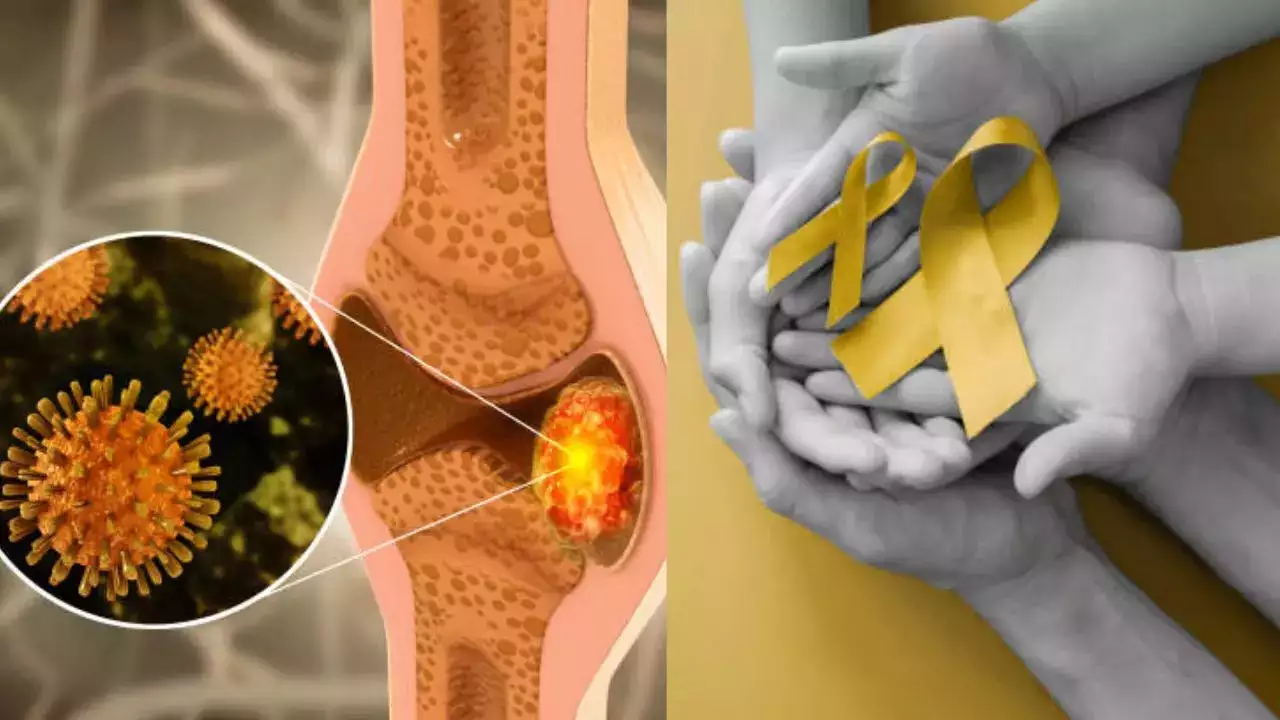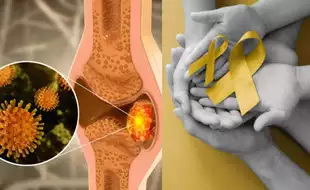
World Cancer Day 2025: Is Your Bone Pain A Warning Sign For Cancer? Expert Answers (Image Credits: iStock)
Bone tumours can sound intimidating, but not all of them are cancerous. They can be benign (non-cancerous) or malignant (cancerous), and while the latter requires urgent medical attention, even benign tumours can cause pain, fractures, or deformities.
To know more, we spoke with Dr Manit Gundavda, Consultant, Orthopaedic Oncology, Kokilaben Dhirubhai Ambani Hospital, Mumbai, to share insights on bone tumours, their risk factors, and how early diagnosis and specialized care can improve outcomes.
What Are Bone Tumours?Bone tumours occur when abnormal cells grow within or near the bone. They are classified into:
1. Benign Tumours – These are non-cancerous but can still cause discomfort. Examples include osteochondromas and giant-cell tumours. "Even though benign tumours aren't life-threatening, they can lead to pain, structural issues, and even fractures if left untreated," explains Dr Gundavda.
2. Malignant Tumours – These include osteosarcoma and Ewing’s sarcoma, which originate in the bone. Further, some cancers, like breast, prostate, or lung cancer, can spread to the bones, making them metastatic bone tumours.
Can Bone Tumours Be Prevented?
While there's no foolproof way to prevent bone tumours, being aware of risk factors can aid in early detection. Dr Gundavda shares key factors that increase the risk:
- Genetics: "Certain hereditary conditions, such as Li-Fraumeni syndrome or hereditary multiple exostoses, significantly increase the likelihood of bone tumours," he says.
- Radiation Exposure: Childhood exposure to high-dose radiation therapy is a known risk.
- Paget’s Disease: A bone disorder that occurs in older adults and can sometimes lead to osteosarcoma.
- Metastatic Cancer: "People with a history of cancers like breast, prostate, or lung cancer should be aware that these can spread to the bones," he cautions.
Early detection is key. Dr Gundavda advises high-risk people to undergo regular imaging and check-ups to catch any abnormal bone growth at an early stage.
Preventing Fractures in Metastatic Bone Disease
For patients whose cancer has spread to the bones, fractures can be a major concern. "Metastatic bone tumours weaken bones, making them highly prone to fractures, which can lead to severe pain and loss of mobility," Dr Gundavda explains.
Key strategies to prevent fractures and maintain quality of life include:
- Bone-Strengthening Medications: Drugs like bisphosphonates and denosumab help reduce bone loss and lower the risk of fractures.
- Preventive Surgery: In some cases, fragile bones are reinforced through internal fixation or cement augmentation to prevent breaks.
- Balanced Nutrition & Physiotherapy: "Weight-bearing exercises should be done cautiously, and supervised physiotherapy plays a crucial role in maintaining mobility," he advises.
How Musculoskeletal Oncology Helps in Diagnosis & Treatment
Musculoskeletal oncology is a specialized field focused on diagnosing and treating bone and soft tissue tumours. Dr. Gundavda outlines the three pillars of bone tumour treatment:
1. Accurate Diagnosis"Advanced imaging, including MRI, CT scans, and biopsies, helps us determine the exact type and stage of the tumour," says Dr Gundavda. Early and precise diagnosis sets the foundation for effective treatment.
2. Personalized Treatment Plans
A multidisciplinary team—including orthopaedic oncologists, radiologists, and physiotherapists—works together to create an optimal treatment strategy, which may include:
- Surgery: Limb-salvaging procedures or tumour removal while stabilizing the bone.
- Chemotherapy And Radiation: Used to shrink tumours or manage metastatic cases.
- Rehabilitation: Post-treatment therapy and prosthetic support to restore mobility.
3. Advanced And Targeted Treatments
With minimally invasive techniques and targeted therapies, treatment has become more effective with fewer complications. "The landscape of bone tumour treatment is evolving, and newer approaches offer better long-term outcomes," says Dr Gundavda.
Bone tumours, whether benign or malignant, require attention and expert care. Early detection, awareness, and specialized treatment significantly improve prognosis. "If you experience persistent bone pain, swelling, or unexplained fractures, don’t ignore it—seek medical evaluation," urges Dr Gundavda.
Get Latest News Live on Times Now along with Breaking News and Top Headlines from Health and around the world.

